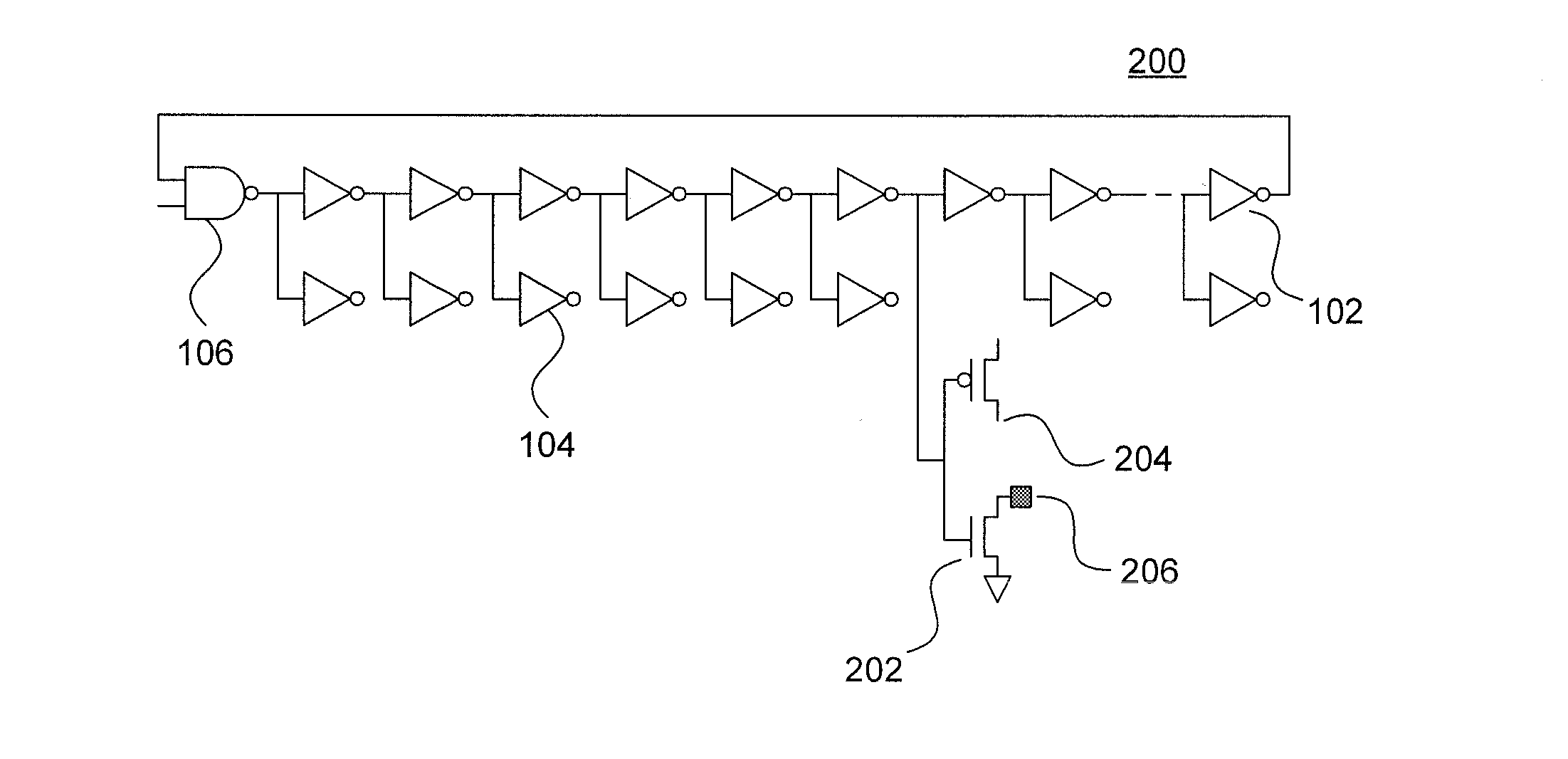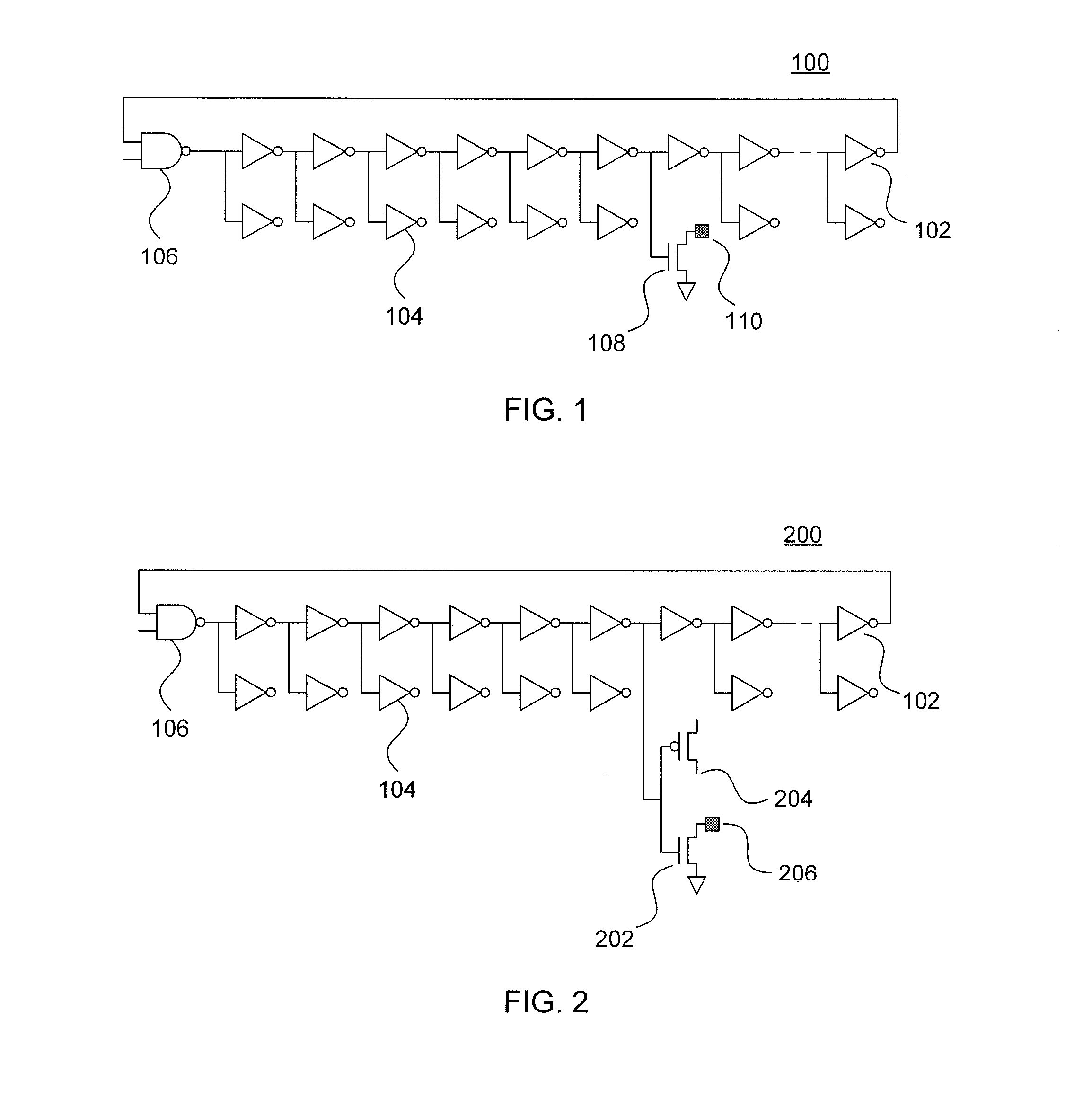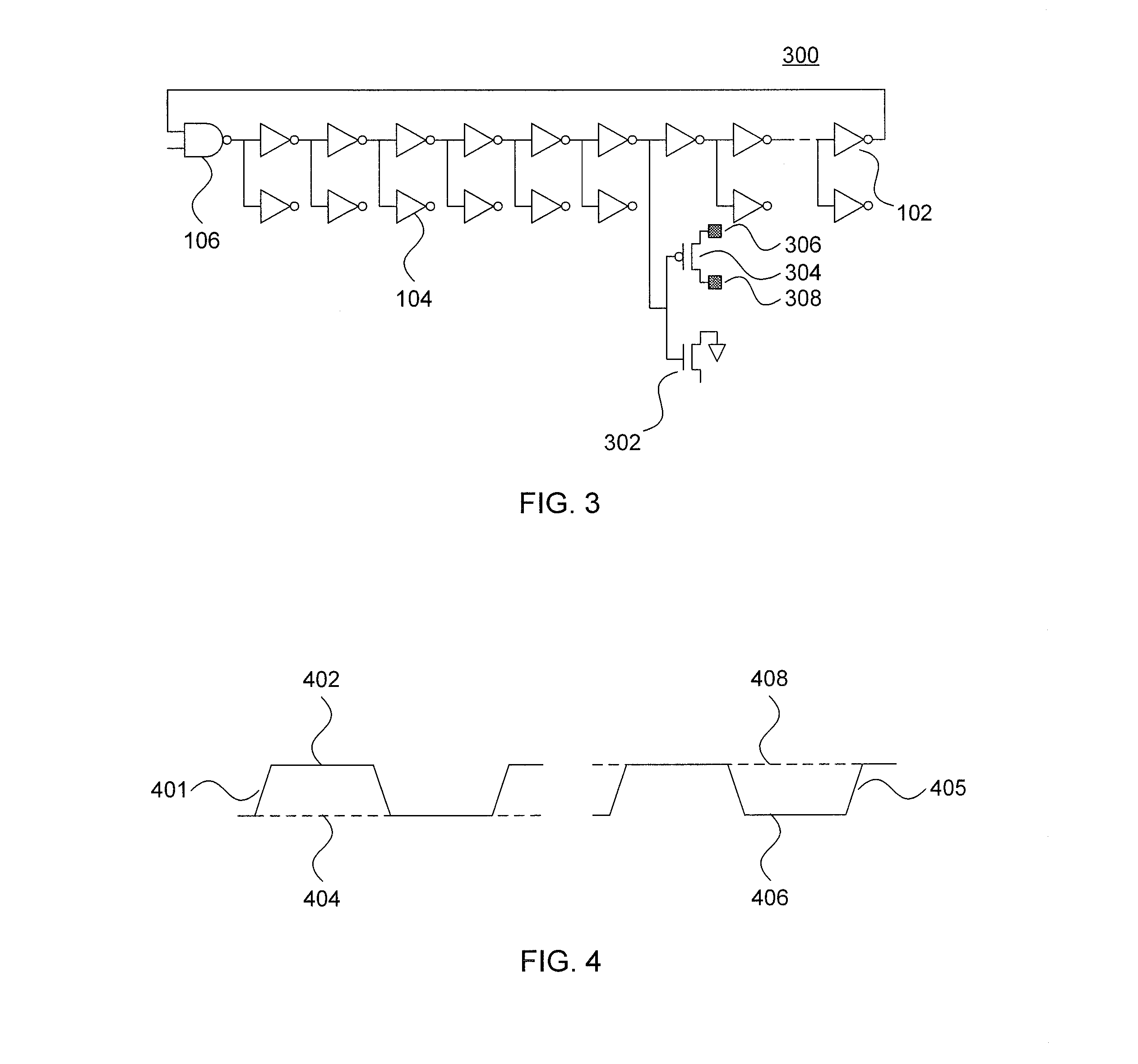Measuring individual device degradation in CMOS circuits
a technology of cmos circuits and individual devices, applied in measurement devices, semiconductor operation lifetime testing, instruments, etc., can solve the problems of reducing the drain current of the device, and still degrading the circuit by a significant and measurable amoun
- Summary
- Abstract
- Description
- Claims
- Application Information
AI Technical Summary
Benefits of technology
Problems solved by technology
Method used
Image
Examples
Embodiment Construction
[0024]Embodiments of the present principles measure individual device characteristics in a degraded ring oscillator or delay chain. By replacing a fan out device on one stage of the ring oscillator or delay chain with a test device and access point, the test device experiences the same gate signal as the circuit elements, but its individual characteristics (such as drain current and threshold voltage) can be measured. The test device can be n-type field effect transistors (FETs) or p-type FETs, and can be subjected to bias temperature instability (BTI) stress only, or to a combination of BTI and hot carrier injection (HCI) stress. The biases applied to the source and drain terminals of the FETs determine if the gate voltage induces BTI stress or HCI stress or both. BTI stress occurs when the FET gate is biased with respect to its source and drain, while HCI stress can only occur if the source and drain are at different potentials, allowing channel current to flow.
[0025]Referring now...
PUM
 Login to View More
Login to View More Abstract
Description
Claims
Application Information
 Login to View More
Login to View More - R&D
- Intellectual Property
- Life Sciences
- Materials
- Tech Scout
- Unparalleled Data Quality
- Higher Quality Content
- 60% Fewer Hallucinations
Browse by: Latest US Patents, China's latest patents, Technical Efficacy Thesaurus, Application Domain, Technology Topic, Popular Technical Reports.
© 2025 PatSnap. All rights reserved.Legal|Privacy policy|Modern Slavery Act Transparency Statement|Sitemap|About US| Contact US: help@patsnap.com



